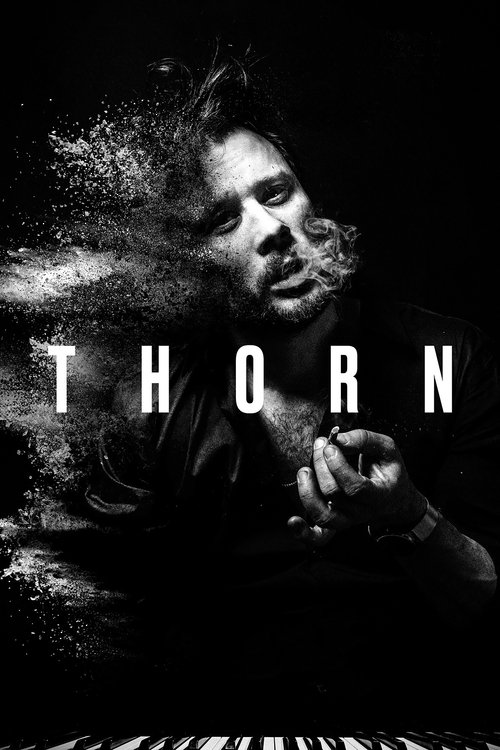
Ask Your Own Question
What is the plot?
What is the ending?
In the ending of "Delirium Tremens," the protagonist, a man struggling with addiction, faces the consequences of his choices. After a series of harrowing events, he confronts his demons and ultimately seeks redemption. The film concludes with a sense of unresolved tension, leaving the audience to ponder the protagonist's future.
As the final act unfolds, the protagonist, whose name is revealed to be Jack, finds himself in a dimly lit room, the walls adorned with peeling paint and shadows that seem to dance with his anxiety. The air is thick with the smell of stale alcohol, a constant reminder of his struggles. Jack's hands tremble as he clutches a half-empty bottle, the last remnant of his addiction. He is haunted by visions of his past, memories of lost relationships and moments of despair flashing before his eyes.
In a pivotal scene, Jack is confronted by his estranged sister, Sarah, who has come to confront him about his destructive behavior. Her face is a mixture of anger and concern, her voice trembling as she pleads with him to seek help. Jack, feeling cornered, lashes out, revealing his deep-seated fears and insecurities. The tension in the room escalates, and for a moment, it seems as if their relationship is irreparably damaged.
As the confrontation reaches its peak, Jack experiences a moment of clarity. He realizes that his addiction has not only consumed him but has also alienated those he loves. The emotional weight of his sister's words begins to sink in, and he breaks down, tears streaming down his face. This moment of vulnerability marks a turning point for Jack, as he acknowledges the need for change.
In the following scene, Jack makes a desperate decision. He leaves the room, stumbling into the night, the cold air hitting his face like a slap. He wanders through the streets, the city lights blurring as he fights against the urge to succumb to his addiction once more. The camera captures his internal struggle, the conflict between his desire for escape and the flickering hope for redemption.
As dawn breaks, Jack finds himself at a rehabilitation center, the sun casting a warm glow over the building. He stands at the entrance, hesitating for a moment before stepping inside. The sound of the door closing behind him signifies a new beginning, a commitment to facing his demons head-on.
The film concludes with a montage of Jack's journey through recovery. We see him attending group therapy sessions, sharing his story with others, and slowly rebuilding his relationship with Sarah. The final shot lingers on Jack's face, a mixture of determination and vulnerability, as he takes a deep breath, ready to embrace the challenges ahead.
In the end, Jack's fate is left open-ended, symbolizing the ongoing battle with addiction and the possibility of redemption. Sarah, having witnessed her brother's struggle, stands by him, offering support as they both navigate the complexities of healing. The film closes with a sense of hope, emphasizing the importance of connection and the strength found in vulnerability.
Is there a post-credit scene?
In the movie "Delirium Tremens," there is no post-credit scene. The film concludes its narrative without any additional scenes or content after the credits roll. The story wraps up with a focus on the main character's journey and the resolution of the central conflict, leaving no further developments or cliffhangers for the audience to ponder after the film ends.
What is the significance of the main character's struggle with addiction in Delirium Tremens?
The main character, a man named Jack, battles severe alcohol addiction throughout the film. His struggle is depicted through intense flashbacks and hallucinations that blur the line between reality and his inner turmoil. This addiction not only affects his physical health but also strains his relationships with family and friends, showcasing the emotional and psychological impact of substance abuse.
How does the setting contribute to the atmosphere of Delirium Tremens?
The film is set in a dilapidated house that Jack inherits, which becomes a character in itself. The dark, claustrophobic spaces reflect Jack's mental state, filled with shadows and echoes of his past. As he navigates through the house, the setting amplifies his feelings of isolation and despair, creating a haunting atmosphere that mirrors his internal struggles.
What role do the supporting characters play in Jack's journey in Delirium Tremens?
Supporting characters, such as Jack's estranged sister and his concerned friend, serve as foils to his character. His sister represents the family he has pushed away due to his addiction, while his friend embodies the hope for recovery. Their interactions reveal Jack's internal conflict and desire for redemption, highlighting the impact of his choices on those around him.
What are the key moments that trigger Jack's hallucinations in Delirium Tremens?
Jack's hallucinations are triggered by various stressors, including the presence of alcohol, memories of traumatic events, and confrontations with his sister. These moments often lead to vivid, surreal sequences where he confronts his demons, both literal and metaphorical, showcasing the depth of his addiction and the chaos within his mind.
How does the film portray the theme of guilt in Jack's character arc in Delirium Tremens?
Guilt is a pervasive theme in Jack's character arc, stemming from his past mistakes and the pain he has caused his loved ones. The film illustrates this through his interactions with his sister, where unresolved issues surface, and through his hallucinations that manifest as guilt-ridden visions. This emotional weight drives Jack's journey towards seeking forgiveness and ultimately facing his addiction.
Is this family friendly?
"Delirium Tremens," produced in 2020, is not considered family-friendly. The film contains several potentially objectionable or upsetting scenes that may be distressing for children or sensitive viewers.
-
Substance Abuse: The film explores themes of alcoholism and addiction, depicting characters struggling with these issues, which may be unsettling for younger audiences.
-
Violence: There are scenes that include physical confrontations and aggressive behavior, which could be disturbing.
-
Mental Health Struggles: The portrayal of mental health issues, particularly related to withdrawal and delirium, may be intense and difficult to watch.
-
Dark Themes: The overall atmosphere of the film is heavy and somber, dealing with themes of despair and hopelessness that may not be suitable for children.
-
Graphic Imagery: Some scenes may contain graphic or disturbing imagery related to the consequences of addiction, which could be upsetting.
These elements contribute to a mature rating, making the film more appropriate for adult audiences.





































